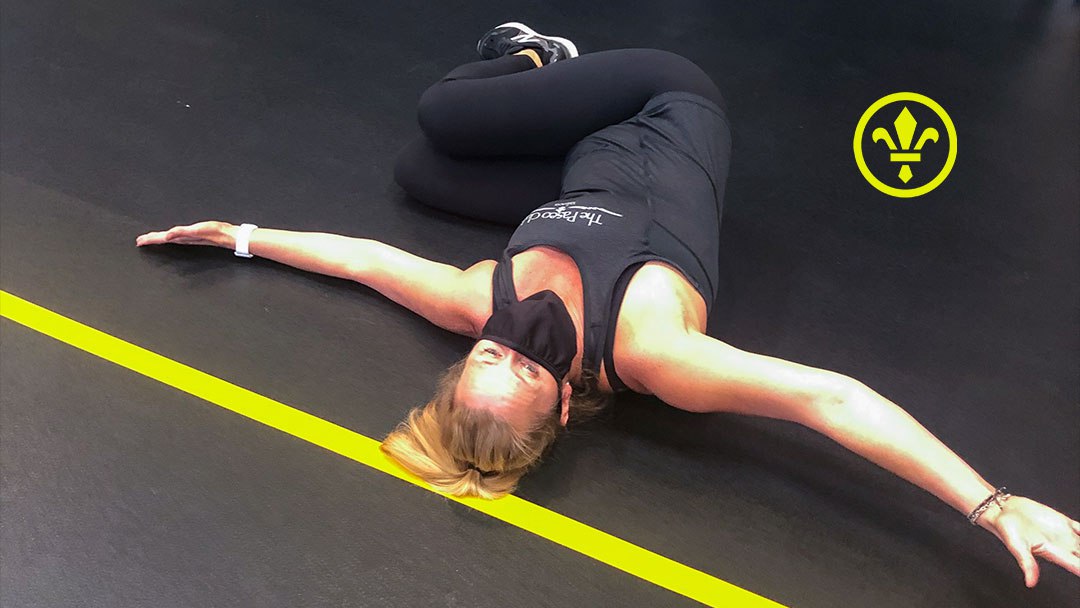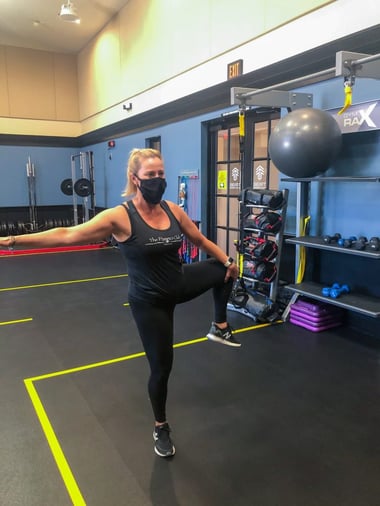Tips to get back on Track with Our Crazy Covid 19 Eating Habits
October 13th, 2020 | 4 min. read
By Jen Azevedo

By Cézanne Youmazzo - Fitness Director and Personal Trainer
I don’t know about you, but I definitely have eaten and drank my way through this crazy unstable time putting on unwanted weight. Listening to unhealthy food cravings has been my culprit.
From ruining your progress to making you feel like a failure, food cravings aren’t your friend or mine (no matter what they say). Let’s break down the real reasons you can’t stop over-snacking, and explain how to combine smart behavioral strategies with healthy junk food alternatives—so you can finally conquer your cravings.
Have you recently stared at a pile of crumbs, with a belly full of shame, and wondered, ‘How did I let this happen? I can relate, because almost everyone can relate.
Besides driving you to eat when you’re not even hungry, cravings can drive you nuts—making you feel like an out-of-control failure who can’t keep from overindulging. But you aren’t powerless against these urges, even if it seems that way.

The secret to winning the cravings game?
It’s not about eliminating your cravings altogether. That’s wishful thinking.
It’s not about building your willpower, either. Relying solely on self-discipline all-too-often ends with a binge (and then a whimper).
No, the way you conquer your cravings is by outwitting them.
How? By understanding why, where, and when they occur and creating a strategic action plan ahead of time.
Dig to the root of your cravings.
No one hates on themselves when they crave a salad, Super Shake, or a grilled chicken breast.
But most cravings are closely tied to junk food and have little to do with true hunger. And each time you indulge these urges you reinforce the behavior, creating a “cravings cycle” that can hijack your progress… and your sanity.
The cravings cycle works like this:
First comes the urge (the craving), followed by the behavior (finding a food that satisfies that craving). Then, you get the reward (eating the food you wanted). That last part is accompanied by a release of dopamine, giving your brain a “hit” of pleasure1.
From there it can snowball: The more often you reward your brain, the more likely it is to stimulate the craving, and the stronger that craving may become.

Find your trigger
Ever had your mouth water at the mere sight of a McDonald’s drive-thru? Or smell that movie popcorn and make a beeline for the concession stand—even though you swore you’d skip it this time?
Cravings are often brought on by environmental cues such as sight, smell, taste, location, or company. So tracking when and where your cravings occur can you help you figure out what triggers them. From there, you can adjust your environment and habits to disrupt the cycle.
Each time you experience a craving, jot down the answers to these questions:
- What are you craving? (A specific food? A certain flavor or texture?)
- Where are you? (Note your location, but also any smells or visual cues—like a restaurant billboard or commercial.)
- What are you doing? (Driving? Working? Watching TV?)
- What are you feeling physically? (Shaky? Lightheaded? Tense?)
- What are you feeling emotionally? (Happy? Cranky? Rushed?)
- What are you thinking? (For instance: ‘I might as well eat this… I’ve already blown my diet.’)
- Who are you with? (Be very specific.)
This isn’t a one-time exercise. Try it for a couple of weeks so you can see what patterns emerge. And trust us, there are almost always patterns.
To make it easy for you, use this cravings journal, which takes you through the process step-by-step.
Change your patterns.
Let’s say you tend to reach for ice cream an hour after dinner every night. According to your notes, you’re not even really hungry; you’re just craving something sweet, salty, or crunchy… or maybe a combination of the three.
Or perhaps you’ve noticed that every day after your 2 pm conference call, you saunter down to the office cafeteria “just to see if there’s anything new.” (There’s not.) And you end up with a 500-calorie “treat” you didn’t need or even truly want.
You’ve just identified a pattern. Now you can disrupt the cycle with these smart behavioral strategies.

Strategy #1: Give your craving a timeout.
Yes, the strategy traditionally used with willful toddlers can also work with Rocky Road.
Notice your snack urge, and sit with it for five minutes without taking action.
This isn’t about exercising willpower. It’s about pausing just long enough to let your conscious mind say, ‘Hey, I’m in charge here!’ This gives you the chance to evaluate all your options, and make a rational decision, rather than a reactionary one.
Are you actually hungry? Or are you bored or stressed or procrastinating?
Does a steak or baked potato sound good, or is it just those donuts in the break room?
These are the kinds of questions you can ask yourself.
Granted, you may still decide to go ahead and indulge. After all, maybe you’re truly hungry. Or perhaps you’re just not having your best day. (Trigger alert.) And that’s okay.
Don’t consider this a failure.
In your efforts to break your cravings cycle, you won’t be perfect. Simply think of this as an opportunity to gather more data about your cravings, so you better understand them for next time. (And give yourself a pat on the back for taking five minutes.)
But here’s the really important part: You don’t have to choose between giving in to your cravings and depriving yourself.
There’s a space in between the two, and that’s where you can really break the cravings cycle.
Strategy #2: Choose an activity that doesn’t involve chewing.
What happens if you step away from the freezer and go for a walk, clean up your phone’s camera roll, or make a new Spotify playlist?
By immersing your mind or body in an activity long enough, you may run the urge all the way out of your system.
 That’s because cravings are often psychological rather than physical.
That’s because cravings are often psychological rather than physical.
And with the exception of very strong grief or trauma, intense feelings don’t usually last longer than 15 to 20 minutes. If you’re not really hungry, the craving will likely dissipate.
You’ve probably even experienced a form of this “diversion therapy” before. Ever get so involved in a project that you actually forget to eat lunch? Or the afternoon flies by, and you didn’t even think about a snack? Same concept, only this time, you’ll do it on purpose.
Once you sense a craving, choose an activity you can really dig into.
Remember, you’re looking to activate and occupy your mind and/or body. So, while different activities may work better for different people, watching TV probably won’t help (and in fact, is often a trigger).
Jen Azevedo is a tennis professional, pickleball professional, personal trainer, group exercise instructor, and the general manager of the Paseo Club. She loves the community at the Paseo Club and that it is also a safe and fun place for her daughter. Jen’s favorite activities are joining her tribe for trail races or her partners for tennis matches. Occasionally Jen slows down to relax with a book — she reads over 100 a year!
Topics:

